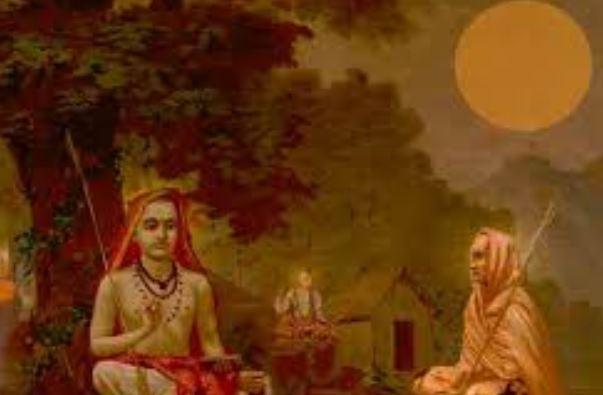Vedanta

Vedanta is one of the most important philosophical schools of Hinduism and represents the philosophical end of the Vedas. The name "Vedanta" comes from the words "Veda" (knowledge) and "Anta" (end), meaning "the end of knowledge" or "the goal of knowledge." It addresses fundamental questions about the nature of the self (Atman), the nature of the universe (Brahman), and the relationship between the two.
Basic Principles of Vedanta:
Brahman and Atman:
Brahman is the absolute, imperishable, and infinite principle of the universe. It is the supreme reality and the source of all existence. Brahman is nirguna (without qualities) and nirakara (formless), meaning it is beyond all categories and concepts.
Atman is the self, the individual consciousness or soul of every being. Vedanta teaches that Atman and Brahman are essentially identical. This means that the true self of each person is ultimately the same as the universal Self (Brahman).
The Unity of Atman and Brahman:
The central teaching of Vedanta is that Atman (the individual self) and Brahman (the universal Self) are not separate, but one and the same in their true nature. This realization is the path to liberation (moksha). The goal of Vedanta practice is to overcome the illusion of separation between the self and the universe and to experience the unity of Atman and Brahman.
Maya and the Illusion of the World:
Maya is the concept that the world as we perceive it is an illusion or deception. Although the world is real in appearance, it is not the true, eternal reality. It is perceived through our limited minds and senses, which lead us to believe that there are separations and differences between things. In reality, however, everything is one and the same – Brahman.
Moksha (Liberation):
The primary goal of Vedanta is moksha, liberation from the cycle of birth and death (samsara) and the attainment of supreme knowledge. Moksha is achieved by recognizing the true nature of the self (atman) and overcoming the illusion of separation from Brahman. This liberation is eternal bliss and a return to unity with the highest reality.
Important Texts of Vedanta:
Vedant teachings are primarily contained in the Upanishads, which are among the oldest philosophical texts in India. The Brahma Sutras and the Bhagavad Gita are also central texts of Vedanta.
The Upanishads:
The Upanishads are the philosophical and spiritual texts that describe the nature of reality, the self, and the universe. They form the foundation of Vedanta philosophy and explore topics such as Brahman, atman, maya, and moksha.
The Bhagavad Gita:
The Bhagavad Gita is part of the Mahabharata and is a dialogue between Arjuna and the god Krishna, who teaches Arjuna on his path to enlightenment. The Gita covers various spiritual paths, including the path of devotion (Bhakti Yoga), the path of knowledge (Jnana Yoga), and the path of action (Karma Yoga).
Brahma Sutras:
The Brahma Sutras are a collection of aphorisms that systematically summarize and explain the teachings of the Upanishads. They are an important philosophical text that deals with the knowledge of Brahman and the connection between Atman and Brahman.
Main streams within Vedanta:
There are various schools or streams within Vedanta, each with different interpretations and approaches to Vedantic philosophy:
Advaita Vedanta (non-dualism):
Advaita Vedanta is the best-known and perhaps most influential form of Vedanta. It was developed by Adi Shankaracharya in the 8th century AD. The core of Advaita Vedanta is non-dualism (Advaita), which holds that Atman and Brahman are ultimately identical. The individual self is not a separate entity, but a manifestation of the one supreme reality, Brahman.
Shankaracharya taught that the world and the individual self are perceived as separate only because of Maya (illusion). True knowledge lies in breaking through this illusion and experiencing the unity of Atman and Brahman.
Vishishtadvaita Vedanta (Qualified Non-Dualism):
This school was formulated by Ramanuja in the 11th century and emphasizes qualified non-duality. According to Vishishtadvaita, Brahman is the highest reality, but the world and the individual self are not completely identical with Brahman. Rather, they are inextricably linked to Brahman and exist as distinct but not separate aspects of divine reality.
This school particularly emphasizes the path of bhakti, the path of devotion to God, as a means to
Attainment of Moksha.
Dvaita Vedanta (Dualism):
Dvaita Vedanta, founded by Madhvacharya, is a philosophy of dualism. This school teaches that Atman and Brahman are two distinct, separate entities. There is a clear separation between the individual self and the supreme God (Brahman). In this teaching, the worship of God (especially Vishnu) is emphasized as the path to liberation.
Practical Application of Vedanta:
The practical application of Vedanta philosophy includes meditation, study of the scriptures, and the pursuit of a life in accordance with the principles of truth, compassion, selflessness, and enlightenment. In particular, the path of knowledge (Jnana Yoga) is a key practice in Vedanta, focusing on the pursuit of self-realization and the realization of the true nature of the self.
Summary:
Vedanta is a profound philosophical tradition that addresses fundamental questions of existence and the relationship between the individual self and the universal principle (Brahman). It teaches that the true nature of humankind and the world is holistic and indivisible. Recognizing this truth leads to liberation from the bondage of life and enlightenment.

